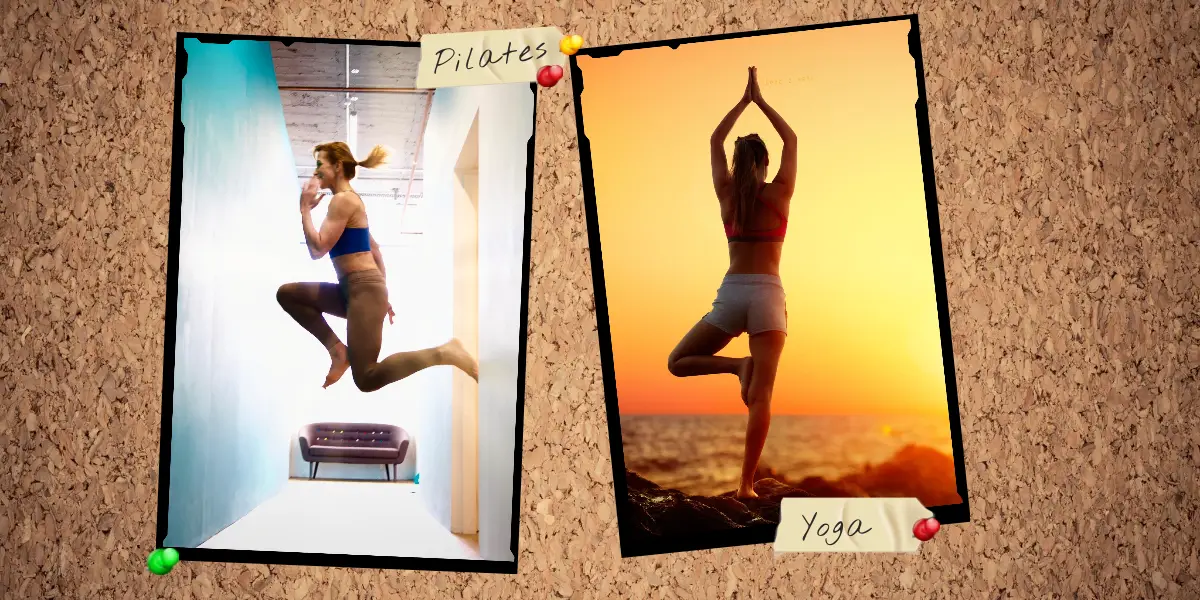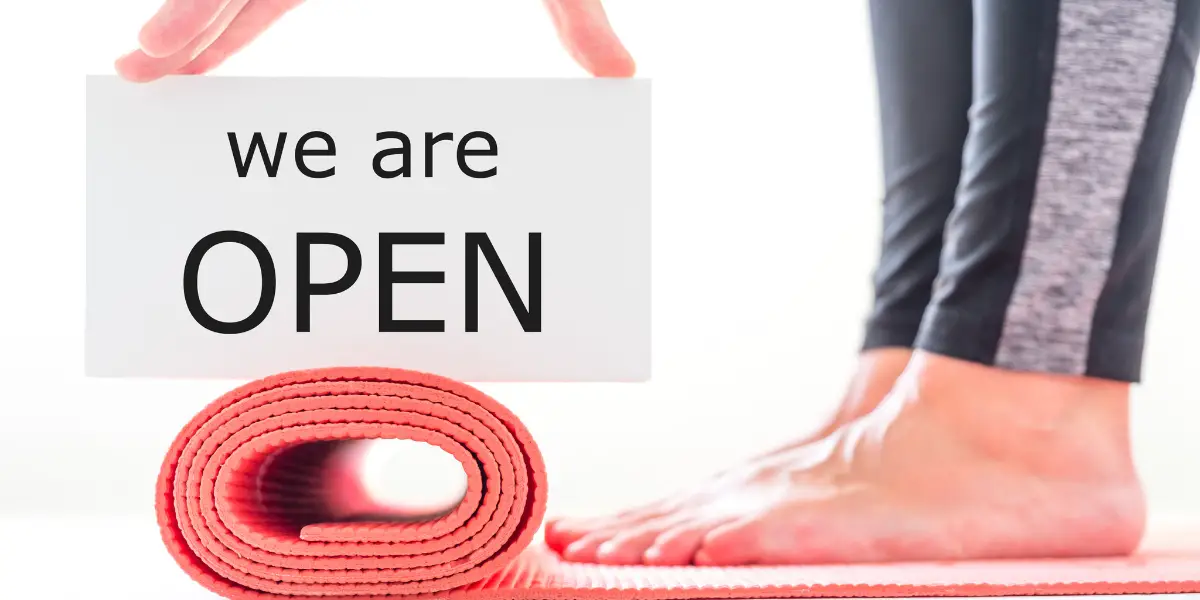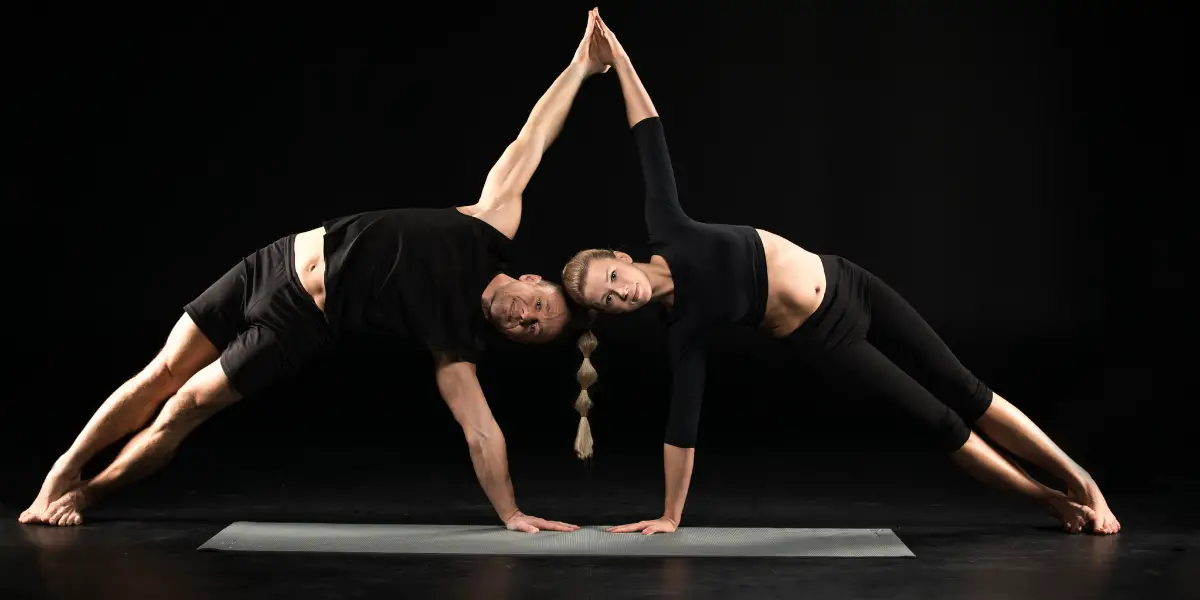When people unfamiliar with Pilates learn I’m a qualified instructor, they often ask “is that like yoga?”. It’s easy to understand why, if you search for images of both you tend to see a woman with a mat in a pose.
Look closer, and you’ll see the yoga photos set on a beach, or some other tranquil spot, while Pilates pictures tend to be in a studio, but aside from that how is Pilates different from Yoga?
Pilates is a method of physical training for the body and mind. The focus of Pilates is on the breath and on core control, which provides stability throughout movement and allows for greater freedom of movement. On the other hand, Yoga is a system for personal enlightenment and spiritual development that aims to unite body, mind and spirit through asanas (postures).
Pilates is a physical exercise program that focuses on core strength, flexibility, balance, and posture. Yoga is also a physical exercise program, but it focuses on breathing techniques, meditation, and relaxation. Pilates and yoga are very similar, but they are two separate exercises.
Pilates is a system of exercises designed to strengthen and stretch muscles while improving posture. Yoga is a form of exercise that focuses on stretching and breathing techniques. Both systems are great for toning and strengthening the core.
What is Yoga?
Yoga is a physical, mental and spiritual discipline that evolved over thousands of years, influenced by the spiritual and physical teachings of ancient India. Yoga is a way of life, not just a physical practice, it is a means of achieving a state of inner peace and balance, and can be practised by people of any age, body type and fitness level.
It blends physical poses (asanas) with breathing techniques (pranayama) and concentration:
- Asanas are also known as yoga poses, and they create elongation of the body in different movement planes; it is the exercise part of yoga.
- Pranayama is the breathing part of yoga. Mastering this breathing technique creates a feeling of tranquillity and inner calm.
- Concentration brings together the pose and the breathing to create a meditative state of awareness.
Because it has some elements of mindfulness, yoga is sometimes called meditative movement.
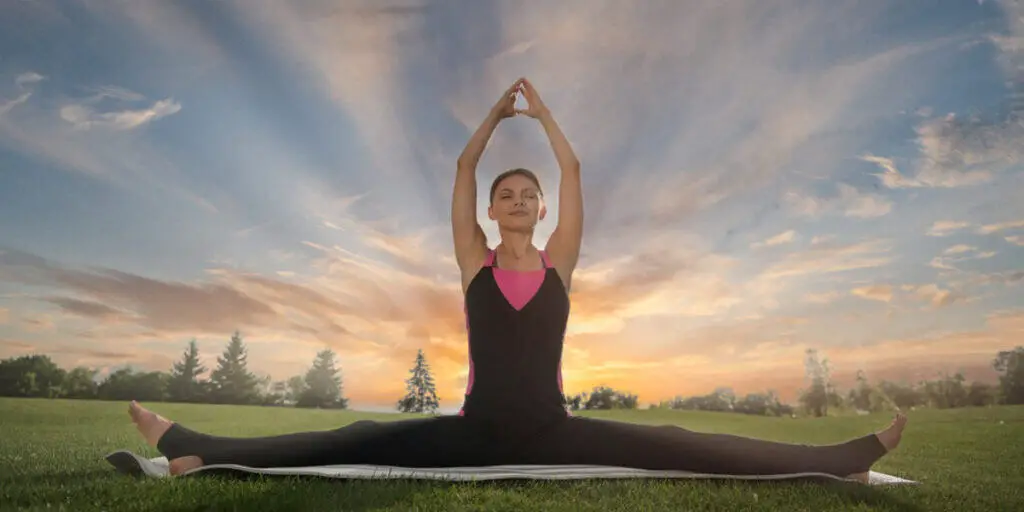
There are many types of yoga, including Hatha yoga for beginners and more demanding styles suited for different levels of practitioners.
Yoga as exercise has changed a great deal over the years, especially since it was introduced to the Western world.
Benefits of Yoga
Yoga is one of the most popular forms of exercise in the world. Yoga involves stretching, breathing exercises, meditation, and poses.
There are many different types of yoga, such as Hatha, Vinyasa, Iyengar, Ashtanga, Bikram, Kundalini, Yin, and Restorative.
Almost everyone can do yoga, but consult your doctor first if you have certain health conditions.
Yoga causes fewer injuries than high-impact exercise, but be aware that advanced positions, such as headstands and lotus and advanced techniques, have the potential to result in injuries.
Here are some of the benefits of practicing yoga.
1. Stress relief
If you’re stressed about something, you can use yoga as a way to reduce stress. Yoga teaches you to breathe deeply and relax. It’s an excellent way to calm your nerves and clear your head. It helps relieve stress through various techniques, including breathing exercises, meditation, and stretching.
2. Weight loss
Yoga is known to burn calories and reduce weight. The practice of yoga involves deep breathing, which increases the rate of oxygen intake into the body. This leads to increased calorie burning.
3. Improved mood
Yoga is said to have positive effects on people’s mental health. Studies show that practicing yoga regularly can lead to better sleep quality, improved concentration, and reduced anxiety.
4. Better posture
Practising yoga can help keep your spine straight and align your muscles properly. This results in a healthier back and overall good posture.
5. Improves Flexibility
Practising yoga helps improve flexibility. This is because yoga focuses on stretching muscles and improving posture.
When you practice yoga, you focus on lengthening your spine and strengthening your core. These two things make it easier to stretch out your muscles and improve your posture.
This means that you can do more advanced stretches and poses. You can also perform these stretches and poses safely and comfortably.
6. Helps Improve Balance
Balance is another great benefit of practising yoga. When you practice yoga, you learn to balance yourself while standing, sitting, kneeling, lying down, and walking.
This makes it easier to maintain balance while doing everyday activities.
7. Increases Strength
Yoga helps you strengthen your core muscles. This strengthens your back, abdomen, chest, shoulders, arms, legs, and neck.
8. Promotes Better Sleep
Sleep is essential to our physical and emotional well-being.
But sometimes it’s hard to fall asleep or stay asleep.
Yoga helps promote better sleep by relaxing your muscles and calming your mind.
What is Pilates?
Pilates was developed in the early 1900s by Joseph Pilates to improve the health of soldiers injured during World War I. It became increasingly popular in Joseph’s later life, when he opened a studio in New York and dancers began to see the benefits.
Pilates is a low-impact exercise that focuses on building strength and flexibility in the core area. It can be done without special equipment, but there are specifically designed machines, the Pilates Reformer and Chair, which are used to provide variety and challenge to the workout.
It uses your own body weight during physical exercise to add resistance to your physical movement and helps with balance and body awareness.
Pilates also has three fundamental elements:
- Alignment: Clients are helped to recognise and improve their skeletal alignment throughout the whole body. This focus on alignment is a key component of Pilates. Ideally, we want the joints of the body correctly aligned to encourage the desired muscles to work efficiently and effectively.
- Breathing: – In the book ‘Return to Life’, Joseph Pilates stated “Before any real benefit can be derived from physical exercise, one must first learn how to breathe properly. Our very life depends on it.” Each Pilates exercise has its own breathing pattern that aids core stability & encourages fluidity of movement. Synchronising the breath with the movement can also help the mind to relax, recharge and focus. It is this focus that allows us to switch off from our everyday lives and be in the moment, connecting mind and body.
- Centring: Centring relates to the challenge of limiting any unwanted movement, maintaining control of the pelvis, spine, shoulders and head, to provide a stable base of support from which all movement is initiated. The stability we want comes from ‘core’ stability and is often a conscious interaction between the mind and body along with a greater understanding of good posture and how to achieve this within ones own body. When we understand centring we can realise it is a dynamic process as we limit movement in one area, our core, whilst controlling the flow of movement elsewhere, i.e. through movement of our limbs.
Benefits of Pilates
Pilates can be beneficial for a variety of conditions, including back pain, neck pain, scoliosis , and multiple sclerosis, and is safe for a variety of people, including pregnant women, seniors, and children.
Core-strengthening exercises help to stabilize the spine and improve posture.
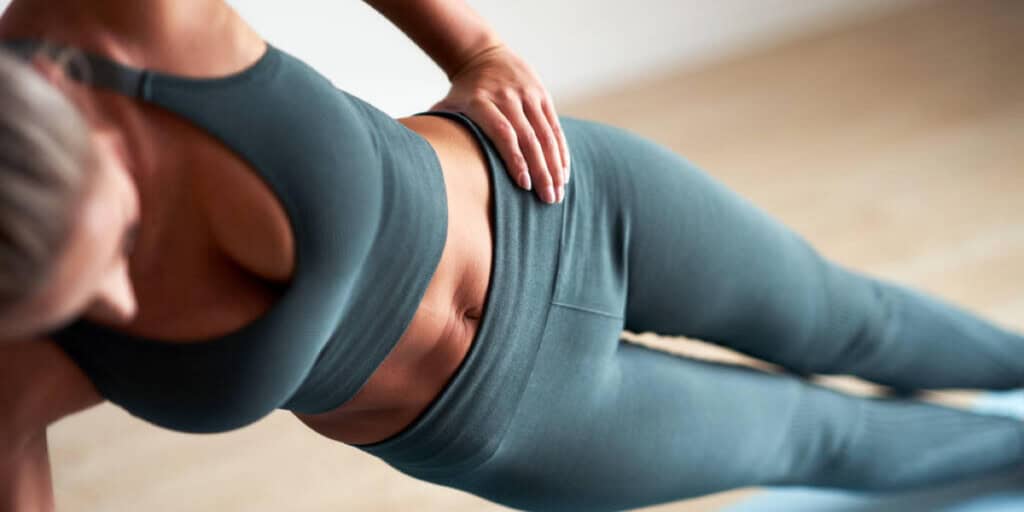
Weight training with resistance machines creates strong muscles that are also flexible and resistant to injury.
Pilates is a great workout for toning muscles and improving flexibility.
Here are some benefits of Pilates:
1. Strengthens core muscles
Core muscles include your abdominal muscles, back muscles, and pelvic floor muscles. These muscles support your spine and pelvis and help stabilize your torso.
When these muscles are strengthened, you’re less likely to experience low back pain.
2. Improves posture
Improving posture helps prevent back pain and neck pain. When your core muscles are strong, your spine is aligned properly. This prevents muscle strain and injury.
3. Increases strength
Pilates strengthens your entire body, including your arms, legs, and core. You’ll see results faster than you would with traditional cardio workouts.
4. Builds endurance
Pilates is designed to improve your stamina. By building endurance, you’ll be able to exercise longer and burn more calories.
5. Reduces stress
Pilates reduces stress by helping you focus on your breath, and control your emotions. It promotes relaxation through breathing techniques and stretching exercises.
6. Improves balance and coordination
Balance and coordination are essential for preventing falls and getting around in every day life. A strong core and balanced posture help you maintain proper balance.
7. Promotes better sleep
A strong core supports your spine and helps keep your body aligned while sleeping.
8. Boosts self-esteem
Pilates builds confidence and self-esteem. It teaches you to trust yourself and believe in your abilities.
It also helps with depression, which is common among people who suffer from chronic pain or injuries.
See this post for even more benefits: The many benefits of Pilates
How are Pilates and yoga similar?
As you can see from the above lists, there are a lot of overlapping benefits to doing either option. Here are some additional similarities:
- Both workouts focus on using bodyweight resistance.
- Both use a mat, although there are differences between the mats used.
- Proper form is crucial for both, with modifications necessary for those with physical limitations.
- Both focus on the mind’s ability to control and guide the physical body.
- Both are great for our physical health and improving our quality of life.
And of course, both physical activities have grown in popularity over the last decade, in part thanks to the rise of YouTube teachers who provide free Pilates and yoga classes online for anyone to access, such as my own Pilates channel you can check out here: https://www.youtube.com/channel/UCmUxqJ_KuN6GQFc0Tg2o-XQ
How is Pilates different from yoga?
While there are a lot of similarities and while it may look visually similar to someone unfamiliar with both techniques, there are some key differences between yoga and Pilates.
Pilates is a form of exercise that focuses on the core and spine. It is essentially a series of exercises that target the abdomen, back, hips, and legs and is primarily a physical exercise, meaning that it involves physical movements that target the muscles and connective tissue of the body.
Yoga is a form of exercise that focuses on the mind and body and incorporates elements of meditation, and spiritual health.
If you took a Pilates and yoga class back to back, you would find yoga mats are typically a lot thinner than Pilates mats. In some yoga practices, the emphasis is on holding postures, while Pilates has a brisk movement component.
The biggest difference is that Pilates focuses on core strength while yoga is more focused on flexibility and has a stronger spiritual connection.
Pilates is beneficial for those with back issues or who play sports that require a strong core.
Yoga is low-impact and can offer increased flexibility, relaxation, and a better mind-body connection.
Neither class is at the high end of the calorie-burning continuum, but if you currently do no exercise at all, you will find both help transform your body and provide you with increased muscle strength.
Pilates vs. Yoga: Which is better?
As you can see from the above, both offer a wide range of health benefits, deciding which is better will largely depend on what you’re looking to get out of a regular practice of either.
If you are more of a spiritual person who wishes to combine physical movements with meditation and exploration of your spiritual side, then the different styles of yoga could be for you.
If, like me, spirituality isn’t really of interest, but you’re still interested in similar mental and physical benefits then Pilates the one to try.
If you’re looking to improve your mental health, both can help by teaching you to focus on the breathing and on listing to your body.
Looking to reduce weight? Both can support weight-management goals, but as a more active and physically challenging exercise, Pilates has the edge, especially when you mix in Power Pilates or HIIT Pilates.
Need to improve your flexibility? Yoga has the edge as this is one of the key focuses of yoga poses.
However, if you’re looking to improve all round strength, mobility and flexibility then Pilates is the way to go!
It can be difficult to pick a clear winner, and it really comes down to which one suits your lifestyle and health goals best.
They can be considered complementary practices, so you don’t have to pick between them. Why not give both a try? Check out: Pilates and Yoga on the SAME DAY?!

